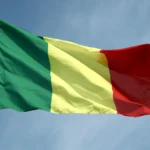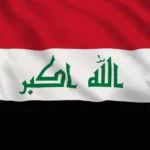
Welcome to the heart of Africa, where the Central African Republic unfolds its captivating story of resilience, diversity, and natural beauty. Nestled at the geographic center of the continent, this landlocked nation is more than just a place on the map; it’s a mosaic of cultures, histories, and landscapes. From gaining independence in 1960 to facing the challenges of political transitions, the Central African Republic has forged a unique path, leaving an indelible mark on the tapestry of African nations. Join us on a journey as we explore the historical facts and numerical trivia that define this remarkable country, from its vibrant capital, Bangui, to the lush biodiversity of its national parks. Discover the cultural richness, the challenges faced, and the aspirations that shape the spirit of the Central African Republic.
Independence Day: The Central African Republic’s Independence Day, celebrated annually on August 13th, marks a significant milestone in the nation’s history. In 1960, the country emerged from the shadows of French colonial rule, gaining sovereignty and autonomy. The day is a poignant reminder of the struggles and aspirations that shaped the nation, as it embarked on a journey of self-determination and nation-building.
Geographical Center: Nestled at the heart of the African continent, the Central African Republic proudly claims the title of its geographical center. This strategic location not only underscores its pivotal position within Africa but also symbolizes a crossroads of cultures, histories, and landscapes. As the central anchor, the country acts as a meeting point for the diverse influences that characterize the continent.
Landlocked Nation: The Central African Republic’s landlocked status contributes to its unique set of challenges and opportunities. Lacking direct access to the sea, the country relies heavily on its neighboring nations for trade and transportation. This geographic reality shapes its economic strategies and diplomatic relations, emphasizing the importance of regional cooperation.
Capital City: Bangui, the bustling capital and largest city of the Central African Republic, rests along the banks of the Ubangi River. This vibrant metropolis serves as the political, economic, and cultural hub of the nation. From the bustling markets to historical landmarks, Bangui encapsulates the dynamic spirit of the Central African Republic.
Official Languages: The linguistic landscape of the Central African Republic reflects its colonial past and cultural diversity. French, the language of its former colonizer, coexists with Sango, a Central African language. This bilingualism symbolizes the nation’s commitment to preserving its cultural heritage while engaging with the broader global community.
Civil Unrest: The Central African Republic has weathered periods of political instability and civil unrest since gaining independence. These challenges have tested the resilience of its people and institutions, shaping the nation’s socio-political landscape. The resilience displayed in the face of adversity stands as a testament to the Central African Republic’s ongoing quest for stability and progress.
Bokassa’s Reign: The era of Jean-Bédel Bokassa, who declared himself emperor, remains a captivating chapter in the Central African Republic’s history. Bokassa’s extravagant coronation in 1977, marked by opulence and excess, drew global attention. His rule, characterized by authoritarianism and controversy, left an indelible mark on the nation’s political narrative.
CAR Flag: The national flag of the Central African Republic is a visual representation of its aspirations and identity. The blue, white, and green horizontal stripes symbolize the sky, unity, and hope, respectively. The yellow star at the center embodies a bright future, encapsulating the nation’s optimism and determination to overcome challenges.
Natural Resources: The Central African Republic’s wealth of natural resources, including diamonds, gold, uranium, and timber, plays a crucial role in its economic landscape. The responsible management of these resources poses both opportunities and challenges, influencing the nation’s development trajectory and global economic engagements.
Bamingui-Bangoran National Park: As one of Africa’s oldest national parks, Bamingui-Bangoran stands as a testament to the Central African Republic’s commitment to preserving its rich biodiversity. The park, nestled in the northeast, serves as a sanctuary for diverse flora and fauna, contributing to the global conservation efforts and showcasing the country’s natural heritage.
Land Size: The vast land size of the Central African Republic, encompassing approximately 622,984 square kilometers, makes it larger than France. Despite its considerable expanse, the country maintains a relatively low population density, allowing for expansive landscapes that range from dense rainforests to sprawling savannas.
Population Diversity: The Central African Republic is a melting pot of ethnic groups, each contributing to the country’s rich cultural tapestry. From the Baya and Banda to the Mandjia and Sara, the diverse ethnic makeup adds a layer of complexity to the nation’s identity, fostering a mosaic of traditions, languages, and customs.
Religious Composition: Religious diversity is a hallmark of the Central African Republic, with a predominantly Christian population and a significant Muslim minority. This harmonious coexistence underscores the nation’s commitment to religious tolerance and inclusivity, even as it navigates the complexities that can arise from diverse religious affiliations.
CAR’s First Female President: In a historic moment, Catherine Samba-Panza assumed the role of interim president in 2014, becoming the first woman to hold this position in the Central African Republic. Her leadership during a challenging period marked a significant stride toward gender equality in the country’s political landscape.
CAR’s Highest Point: Mont Ngaoui, reaching an elevation of 1,420 meters (4,659 feet), stands as the highest point in the Central African Republic. This geographic feature not only shapes the country’s topography but also provides breathtaking vistas of the surrounding landscapes.
CAR’s Lowest Point: The Ubangi River, forming part of the border with the Democratic Republic of the Congo, represents the lowest point in the Central African Republic. The river not only serves as a vital waterway but also highlights the country’s varied topography, from lowland river valleys to higher plateaus.
CAR’s UN Peacekeeping Mission: The United Nations Multidimensional Integrated Stabilization Mission in the Central African Republic (MINUSCA) plays a crucial role in maintaining peace and stability. This peacekeeping mission, authorized by the UN Security Council, reflects international efforts to support the Central African Republic in its pursuit of a secure and prosperous future.
CAR’s National Parks: Beyond Bamingui-Bangoran, Manovo-Gounda St. Floris National Park is another UNESCO-listed treasure. This park, celebrated for its biodiversity and ecological significance, encapsulates the nation’s commitment to conservation and sustainable environmental practices.
CAR’s Time Zone: Following West Africa Time (WAT), which is UTC+1, the Central African Republic aligns its clocks with the broader West Africa region. This temporal standard reflects the country’s geographical and geopolitical connections within the African continent.
CAR’s Economic Challenges: Despite its abundance of natural resources, the Central African Republic faces economic challenges that place it among the world’s least developed countries. Factors such as political instability, limited infrastructure, and global economic dynamics contribute to the complexities of the nation’s economic landscape. Navigating these challenges remains a priority for policymakers striving to foster sustainable development.
CAR’s Currency: The official currency of the Central African Republic is the Central African CFA franc (XAF). Shared with several other Central African countries, this currency reflects the economic and monetary cooperation within the region. The CFA franc plays a crucial role in facilitating trade and financial transactions, providing a common monetary framework for participating nations.
CAR’s First Female President: In 2016, Catherine Samba-Panza made history as the first woman to assume the role of interim president in the Central African Republic. Her appointment brought a groundbreaking shift in the nation’s political landscape, challenging gender norms and offering inspiration to future generations of women aspiring to leadership roles in the country.
Wildlife Conservation: The Dzanga-Sangha Reserve, recognized as a UNESCO World Heritage site, serves as a testament to the Central African Republic’s commitment to wildlife conservation. Located in the dense rainforests, the reserve is dedicated to protecting endangered species such as forest elephants and lowland gorillas, contributing to global efforts to preserve biodiversity.
CAR’s International Relations: The Central African Republic actively engages in international relations, collaborating with global organizations and neighboring nations to address regional challenges. Its participation in diplomatic initiatives and international forums highlights its commitment to fostering cooperation, peace, and development on both regional and global scales.
CAR’s Art and Culture: The Central African Republic boasts a vibrant cultural scene, with traditional art playing a significant role in expressing the nation’s identity. Woodcarvings, pottery, and woven items are among the diverse forms of artistic expression that showcase the creativity and craftsmanship of the Central African people, contributing to the nation’s rich cultural heritage. This artistic legacy serves as a source of pride and a means of sharing the country’s unique cultural narrative with the world.









